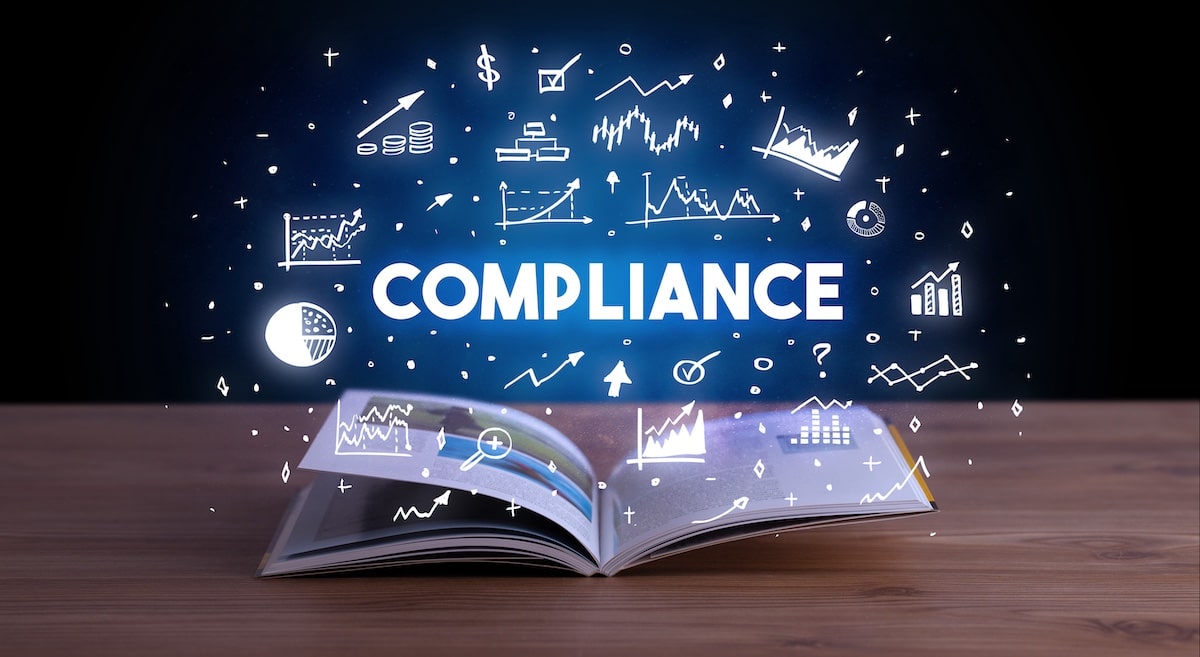Resources
Glossary
A
Ad Extensions
Additional pieces of information that can be added to Google AdWords ads, including reviews, address, pricing, callouts, app downloads, site links, and click-to-call. Ad extensions help advertisers create richer, more informative ads that take up more on-page real estate, which generally lead to higher Click-Through Rates.
Alt-Text (Alternative Text)
An attribute added to HTML code for images used to provide vision-impaired website visitors with information about the contents of a picture. Best practice dictates that all images on a website should have alt text and that the text should be descriptive of the image.
Anchor Text
The clickable words in a hyperlink. In SEO, anchor text is a ranking signal to Google, as it provides context about the destination site. For example, if many websites link to one particular website using the anchor text “free stock photos”, Google uses that information to understand the destination site is likely a resource with free stock photos. Theoretically, that could help the stock photos website rank in Google for keywords related to stock photography.
AdSense (Google AdSense)
A Google platform that allows websites to earn money by publishing Google network ads on their website.
Algorithm
A process or set of rules that computers follow to perform a task. In digital marketing, an algorithm usually refers to the sets of processes Google uses to order and rank websites in search results. The SEO industry gives various Google algorithms their own nicknames like Penguin (which analyzes the quality of links pointing to a website) and Panda (which assesses the quality of the content on a website). The main ranking algorithm is SEO is referred to as “The core algorithm”.
B
Backlink
Also known more plainly as a “link”, this is when one website hyperlinks to another website using HTML code. Backlinks are used by Google in their SEO ranking factors, with the basic idea being that if “website A” has incoming backlinks from other strong websites (websites B, C, and D), the links are votes of trust for website A, and website A gains some authority from B, C, and D through the links.
Blackhat SEO
Slang for an unethical digital marketer or SEO who uses spammy tactics to rank websites, like article spinning, mass directory link building, or negative SEO.
Bounce Rate
The percentage of visitors to a website that leaves immediately without clicking or interacting with any portion of the page. For example, if 100 people visit a website, and 50 of them immediately leave, the website has a bounce rate of 50%. Websites aim to have as low of a bounce rate as possible, and averages tend to be anywhere between 40-60%.
Bread Crumbs
Navigation links at the top of a webpage that better help the user understand where on the website they are. These links often appear near the web page’s title and look something like this: Home >> Services >> SEO
C
Canonical (rel=canonical)
A piece of code that is added into the HTML head of a webpage to indicate to Google whether a piece of content is original or duplicated from somewhere else. Original content should be canonical to itself, and content taken from other places should point the canonical to the original source URL. Canonicals can also be used to avoid duplicate content issues within a website.
Click Through Rate
A metric showing how often people click on an ad after they see it. It can be calculated by dividing the number of clicks on the ad divided by the number of impressions (how many times it was seen). This ratio can be useful when determining whether an ad’s messaging matches what the consumer is searching for and if it resonates with them.
Conversion Rate
The rate at which visitors to a website complete the predefined goal. It is calculated by dividing the number of goal achievements by the total number of visitors. For example, if 100 people visit a website and 10 of them complete the conversion goal (like filling out a contact form) then the conversion rate is 10%.
CPA (Cost Per Acquisition)
A metric in paid advertising platforms that measures how much money is spent in order to acquire a new lead or customer. It can be calculated by dividing the total spend by the number of conversions, for a given period of time. For example, if in a month a PPC account spends $1000 dollars and gets 10 conversions (leads), then the cost per acquisition is $100.
CPC (Cost Per Click)
The amount of money spent for a click on an ad in a Pay-Per-Click campaign. In the AdWords platform, each keyword will have an estimated click cost, but the prices change in real-time as advertisers bid against each other for each keyword. Average CPCs can range from less than $1 for long-tail or low-competition keywords, to upwards of $100 per click for competitive terms, primarily in legal, insurance, and water damage restoration industries.
CPM
Stands for “Cost Per Thousand” (M is the roman numeral for 1,000). This is the amount an advertiser pays for 1,000 impressions of their ad. For example, if a publisher charges $10 CPM, and your ad shows 2000 times, you will pay $20 for the campaign ($10 x 1000 impressions) x 2. Measuring ad success with CPM is most common in awareness campaigns, where impressions are more important than conversions or clicks.
CRO (Conversion Rate Optimization)
A branch of digital marketing that aims to improve the conversion rate of web pages, thus making the pages more profitable. Conversion rate optimization combines psychology with marketing and web design in order to influence the behavior of the web page visitor. CRO uses a type of testing called “A/B split testing” to determine which version of a page (version A or version B) is more successful.
CTR (Click Through Rate)
The ratio of how many times an advertisement was clicked on, versus how many times it was shown. It is calculated by dividing the ad’s clicks by the ad’s impressions. For example, if an ad is shown to 100 people, and 10 of them click the ad, then it has a click-through rate of 10% (10 clicks / 100 impressions = 10%)
D
Directory
A website that categorically lists websites with similar themes. Some directories like chambers of commerce (a list of businesses in one geographic area) can be helpful for SEO, however widespread abuse of spam directories led Google to discount links from directories whose sole purpose was selling links.
Display Ads
Ads on a display network which include many different formats such as images, flash, video, and audio. Also, commonly known as banner ads, these are the advertisements that are seen around the web on news sites, blogs, and social media.
Display Network
A network of websites and apps that show display ads on their web pages. Google’s display network spans over 2 million websites that reach over 90% of people on the internet. Businesses can target consumers on the display network based on keywords/topics, placement on specific webpages, and remarketing.
DNS
Stands for Domain Name System, it is a protocol that translates website URLs (which use alphabetic characters) into IP addresses (that use numeric characters). DNS exists because it is more useful for internet users to remember letters and words in website URLs, but the worldwide web communicates in numbers with IP addresses. Without DNS, every website would just be a string of numbers rather than a traditional URL.
Do-follow
A phrase that denotes a hyperlink absent of a “no-follow” tag. By default, a hyperlink is a do-follow link until a “no-follow” piece of code is added to it. Dofollow links pass SEO equity to the destination URL, while “no-follow” links do not.
Duplicate Content
This refers to instances where portions of the text are found in 2 different places on the web. When the same content is found on multiple websites, it can cause ranking issues for one or all of the websites, as Google does not want to show multiple websites in search results that have the exact same information. This type of duplicate content can occur as a result of plagiarism, automated content scrapers, or lazy web design. Duplicate content can also be a problem within one website — if multiple versions of a page exists, Google may not understand which version to show in search results, and the pages are competing against each other. This can occur when new versions of pages are added without deleting or forwarding the old version, or through poor URL structures.
E
Ecommerce (or E-Commerce)
Stands for Electronic Commerce, it is a classification for businesses that conduct business online. The most common form of e-commerce business is an online retailer that sells products direct to the consumer.
Email Automation
A marketing system that uses software to automatically send emails based on defined triggers. Multiple automated emails in a sequence are used to create user funnels and segment users based on behavior. For example, an automation funnel could be set to send email 1 when a person provides their email address, then either email 2a or 2b would be sent based on whether or not the person clicked on the first email.
F
Facebook Ads Manager
Ads Manager is a tool for creating Facebook ads, managing when and where they’ll run, and tracking how well campaigns are performing on Facebook, Instagram, or their Audience Network.
Featured Snippet
A summarized piece of information that Google pulls from a website and places directly into search results, in order to show quick answers to common and simple queries.
G
Google Hummingbird
The industry nickname for one of the first major overhauls to the main Google search algorithm. In contrast to algorithm updates like Panda or Penguin, Hummingbird was intended to completely update the way Google interpreted user search queries.
Google My Business
The platform on which businesses can input information to appear in search results, map packs, location searches, and more. Name, address, phone number, website link, hours of operation, and reviews can all be managed through this platform. GMB is crucial to local SEO campaigns, as this is directly related to location-based searches.
Google Panda
A Google algorithm update focused on analyzing the quality of a website’s on-page content. Initially released in February 2011, and updated periodically after this release, similar to Google Penguin.
Google Partner Agency
An agency that is certified by Google for meeting certain requirements. To be a Google Partner, an agency must have an AdWords certified employee affiliated to the company profile, meet spend requirements, and Meet the performance requirement by delivering overall ad revenue and growth, and maintaining and growing the customer base.
Google Penguin
A Google algorithm update focused on analyzing the quality of links pointing to a site, or more accurately, the overall quality of a site’s backlink profile. First announced in April 2012 and updated periodically after this release, similar to Google Panda.
Google Pigeon
A Google algorithm update focused on providing locally relevant results to searchers. For example, searching for “SOHO coffee shop” will return results primarily centered around that neighborhood.
Google Search Console
Search Console is a free tool Google offers to webmasters. Within the tool are several areas that include data on how a site is performing in search. Search Console differs from Analytics – it does not measure traffic, it measures a site’s visibility on search pages, and indexability by Google crawler bots.
GCLID
Stands for Google Click Identifier. This is a small string of numbers and letters that serves as a unique ID badge for visitors to a website. Typically, this is used to keep track of individual users as they click on a PPC ad, so that their interaction with the website (whether they converted, on which page, and using which method) can be tracked and attributed properly using Google Analytics. (See also: Google Analytics, PPC)
H
Header Tags
Header tags are used in HTML for categorizing text headings on a web page. They are, in essence, the titles and major topics of a web page and help indicate to readers and search engines what the page is about. Header tags use a cascading format where a page should have only one H1 (main title) but beneath can be multiple H2s (subtitles) and every H2 can have H3s beneath (sub-sub titles) and so on.
Heatmap
A heatmap is a graphical representation of how users interact with your site. Heatmapping software is used to track where users click on a page, how they scroll, and what they hover over. Heatmaps are used to collect user behavior data to assist in designing and optimizing a website.
HTTP
Stands for Hypertext Transfer Protocol. HTTP is the protocol used by the world wide web to define how data is formatted and transmitted, and what actions web browsers and web servers should take to respond to a command. When you enter a website into your web browser and press enter, this sends an HTTP command to a web server, which tells the server to fetch and send the data for that website to your browser.
HTTPS
Stands for Hypertext Transfer Protocol Secure. Is a secured version of HTTP, which is used to define how data is formatted and transmitted across the web. HTTPS has an advantage over HTTP in that the data sent when fetching a webpage is encrypted, adding a layer of security so that third parties can’t gather data about the webpage when the data is sent from the server to the browser.
I
iFrame
An HTML document that is inside of another HTML document on a website. Iframes are used commonly to embed content from one source onto another web page.
Impression Share
Used in Pay per click advertising, this metric refers to the percentage of times viewers have seen an advertiser’s ad, in relation to the total possible amounts that ad could have been seen. If an ad campaign’s impression share is 70%, then the ads showed 7 out of 10 possible times.
Inbound Marketing
Inbound marketing refers to the activities and strategies used for attracting potential users or customers to a website. “Inbound” is a more recent euphemism for what has traditionally been called “SEO”. Inbound marketing is crucial to having a good web presence, as it’s used as a way to attract prospective customers by educating and building trust about your services, product, and/or brand.
Index
When used as a noun, index refers to all of the web pages that Google has crawled and stored to be shown to Google searchers (i.e. “The Google index has billions of websites”). When used as a verb, it refers to the act of Google copying a web page into their system (i.e. “Google indexed my website today so it will start appearing in their search results”).
J
Java
Java is a programming language that is used to create applications that can run on a digital device. Java can be used on its own, while JavaScript can only be used in web browsers.
JavaScript (JS)
JavaScript is a scripting language. JavaScript is used on web browsers to provide interactive elements to web pages that are difficult or impossible to achieve with just HTML or CSS.
K
Keyword Density
Keyword density refers to the percentage of how often a keyword appears on a webpage in relation to the total words on that webpage.
Keyword Stuffing
When a web page uses a keyword too often or superfluously, with the intent of manipulating search engines. This type of behavior is frowned upon and can lead to either algorithmic devaluation in search or a manual penalty from Google.
L
Latent Semantic Indexing (LSI)
Link Profile
The cumulative grouping of all links pointing to a particular website. A link profile can be used to determine a website’s power, trust, subject matter, and content. Link profiles are important at determining where a website ranks in google search results.
Lookalike Audience
A targeting option offered by Facebook’s ad service. This audience is created from a source audience (i.e. fans of your Facebook page, email list), and from this list, Facebook will identify common characteristics between audience members. Facebook will then target users that exhibit similar interests or qualities.
Long-Tail Keyword
A keyword phrase that is longer in length and hyper-specifically matches a user search query. A long-tail keyword gets fewer searches per month but has a higher search intent, and typically less competition by companies looking to serve up content to that search query.
M
Meta Tags
HTML snippets added to a webpage’s code that add contextual information for web crawlers and search engines. Search engines use metadata to help decide what information from a webpage to display in their results.
Meta Description
The meta description is an important aspect of a webpage because it is what appears in Google searches and other search engine results.
N
NAP (Name, Address, Phone)
An acronym for local citations. Consistency in name, address, and phone number citations is an important piece of a local SEO Campaign.
No-follow
An HTML link attribute that communicates to web crawlers and search engines that the link to the destination web page should NOT transfer SEO equity.
O
Organic Rankings
A source of traffic to a website that comes through clicking on a non-paid search engine result. Organic traffic is a main measurement of an SEO campaign and grows as a site ranks better for keywords or ranks for more keywords in search engines.
P
PBN (Private Blog Network)
Also known as a link network, a private blog network is a collection of private websites all linking to each other. These networks are intended to manipulate search engines by adding large amounts of new links to a website’s link profile.
Penalty
An infraction issued by Google, to a webmaster, for breaking Google’s guidelines. The penalty is issued by Google through Search Console and can result in a sites’ removal from search engine results.
Q
Quality Score
Google Ads’ rating of the relevance and quality of keywords used in PPC campaigns. These scores are largely determined by the relevance of ad copy, expected click-through rate, as well as the landing page quality, and relevance.
Query
The term given for what a user types and searches using search engines like Google, Bing, YouTube, and Duck Duck Go.
R
ROAS (Return on Ad Spend)
A PPC marketing metric that demonstrates the profit made as compared to the amount of money spent on the ads. Similar to ROI.
Robots.txt
A text file stored on a website’s server that includes basic rules for indexing robots which “crawl” the site. This file allows you to specifically allow (or disallow) certain files and folders from being viewed by crawler bots, which can keep your indexed pages limited to only the pages you wish.
ROI
Stands for Return On Investment. In order for a business to receive a positive ROI, they must earn more money using marketing channels than they are spending on the marketing itself.
S
Schema Markup
Code that is added to the HTML of a website to give search engines more relevant information about a business, person, place, product, or thing. Also known as rich snippets or structured data.
Search Operator
A text modifier that can be used in Google searches to return more specific results. Search operators essentially act as shortcuts to an advanced search.
SEM (Search Engine Marketing)
A nebulous term that can apply to either 1. Any digital marketing that involves the use of a search engine, or 2. Only paid digital marketing that involves a search engine, i.e.: PPC (pay-per-click).
SERP
Stands for Search Engine Results Page, the page featuring a list of search results that are returned to the searcher after they submit a keyword search.
Sitemap
An XML file or page on a website that lists all of the pages and posts for search engines to see. This document helps search engines quickly understand all of the content that they should be aware of on a particular website.
Slug
Slug is the portion of a URL that comes after the .com. For example, the homepage might be http://www.domain.com, but for the Contact Us page, a slug would be added to the end of the URL to direct the browser to a page within the website i.e. http://www.domain.com/contact-us.
T
Title Tag
An HTML element that is used to describe the specific topic of a web page. Title tags are displayed in the tabbed top bar of a web browser. In SEO, it is best practice to have descriptive title tags featuring your main keywords, rather than something basic like “home.”
Tracking Code
A script, often placed in the header, footer, or thank you page of a website that passes information along to software tools for data gathering purposes. Tools like Google Analytics and Google Ads utilize tracking codes so that they can track information about users who view a site.
U
UI
Stands for User Interface. User interface is the area with which a user interacts with something through a digital device. Good UI should be fluid and easy for most people to understand.
UX
Stands for User Experience. UX refers to how a user interacts with a website or app (where they click, which pages they visit). UX can be shaped by testing differences in page layouts, CTAs, colors, content, etc. to improve conversion rates. Having a good UX is crucial to having a good business, as it drives repeating users and engagement.
W
Whitehat SEO
Term for ethical digital marketers who don’t participate in work that could be viewed as unethical or as spam.
Wireframe
A cursory layout drawing of a webpage that acts as the first step in the design process.
X
XML
Stands for Extensible Markup Language. Similar to HTML (Hypertext Markup Language) in that it is primarily used to categorize various data for computers and humans to use more effectively. In basic terms, XML allows for customizable tags for marking up information that is otherwise difficult for computers to understand.
XML Sitemap
A document in XML format that categorizes all relevant pages, posts, files, etc. of a website. This document is not intended for human use, though it can be viewed by humans. Instead, an XML sitemap is designed to help search engine crawler bots easily find all of the pages for a given website – very similar to a roadmap or atlas that one would use when driving a car long distances.
#
301 Redirect
A method of redirecting a visitor from one web page to another web page.
This type of redirect is to be used for permanent redirects.
302 Redirect
A method of redirecting a visitor from one page to another web page, used for temporary situations only. For permanent redirects, instead, use a 301 redirect.
404 Error
The error message that appears when a visitor tries to go to a web page that does not exist.








